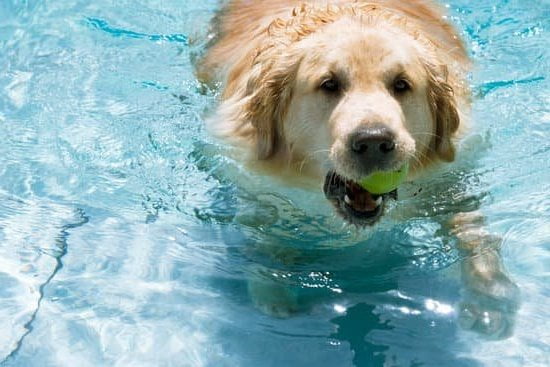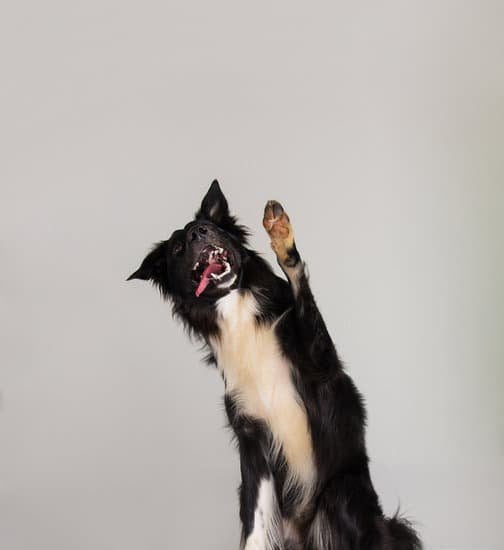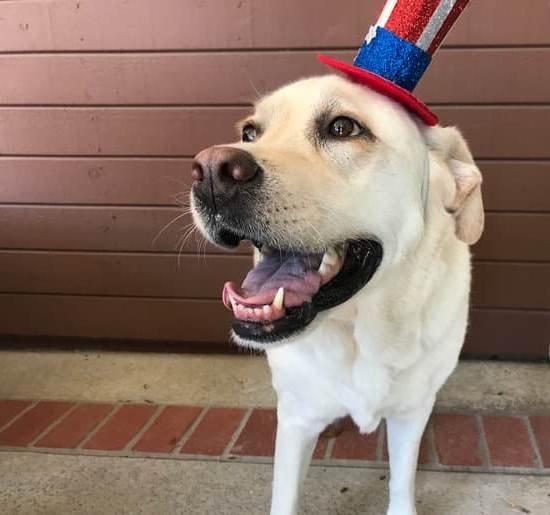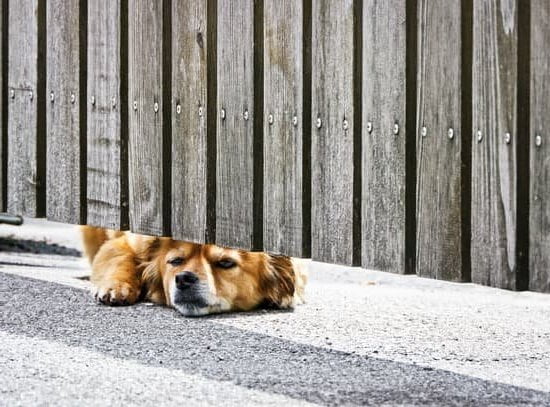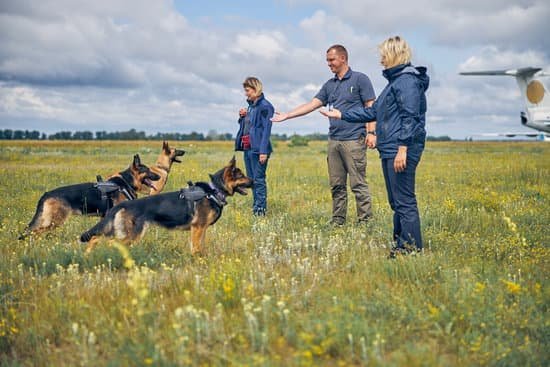?
There is a lot of debate surrounding this question. Some people believe that it is not possible to train an aggressive dog not to be aggressive, while others believe that it is possible with the right methods. The truth is that it depends on the dog and the situation.
Some dogs are simply more aggressive by nature and cannot be trained not to be aggressive. However, other dogs may only be aggressive when they feel threatened or when they are protecting their territory. In these cases, it is possible to train the dog to not be aggressive.
The key is to start training the dog early and to be consistent with the training. You may also need to seek the help of a professional trainer, especially if the dog is very aggressive. The trainer can help you to develop a training program that is specific to your dog’s needs.
There are a number of things you can do to help train an aggressive dog not to be aggressive. Some of the most important things include:
-Establishing rules and boundaries for the dog and enforcing them consistently.
-Providing plenty of exercise and mental stimulation for the dog.
-Teaching the dog basic commands and obedience training.
-Ensuring that the dog is properly socialized.
-Avoiding situations that may trigger the dog’s aggression.
-Providing positive reinforcement when the dog behaves appropriately.
It is important to keep in mind that training an aggressive dog not to be aggressive can be a difficult process, and it may take time and patience. However, with the right methods and the help of a professional trainer, it is possible to achieve success.
How Do I Train My Dog Not To Be Aggressive
Toward Other Dogs?
Many people struggle with the issue of dog aggression. It can be a difficult problem to overcome, but it is definitely possible with the right training. The first step is to understand the root of the aggression. There are many different reasons why dogs may become aggressive, but some of the most common reasons include fear, territoriality, and dominance.
Once you have determined the root cause of the aggression, you can begin to address it through training. It is important to be consistent and patient when training a dog not to be aggressive. There is no quick fix, and it may take some time and effort to get results. However, if you are consistent and committed to the training, your dog can learn to overcome his aggression.
There are a few basic steps that you can take to help train your dog not to be aggressive. One of the most important is to ensure that your dog is properly socialized. Dogs that are properly socialized are less likely to become aggressive, because they have learned how to interact with other dogs in a positive way.
In addition, you should make sure to provide your dog with plenty of exercise and stimulation. A bored dog is often a frustrated dog, and may be more likely to become aggressive. Playing games and providing plenty of exercise can help to keep your dog calm and content.
Finally, you should make sure to obedience train your dog. This will help to establish dominance and control over your dog, which can help to prevent aggression. obedience training will also help to ensure that your dog understands what is expected of him, which can help to prevent some of the misunderstandings that can lead to aggression.
Dog Training For Aggressive Dog
Behavior
Dogs can be aggressive for many reasons, and the approach to correcting the behavior will vary depending on the underlying cause. If the aggression is due to fear, the dog will need to be taught how to cope with the things that scare him. If the aggression is territorial, the dog will need to be taught how to behave around strangers and other animals. If the aggression is due to excitement or frustration, the dog will need to be taught how to control his impulses.
There are many different techniques that can be used to correct aggressive dog behavior, but the most important factor is consistency. The dog must be taught that the behavior is unacceptable and will not be tolerated. The owner must be willing to put in the time and effort to properly train the dog, and should be prepared to deal with occasional setbacks.
There are many different training methods available, and the best approach will vary depending on the dog’s personality and the severity of the aggression. Some common techniques include positive reinforcement, punishment, and desensitization.
Positive reinforcement is a reward-based training method that involves rewarding the dog for good behavior. This can include treats, praise, or petting. Punishment is a method that involves punishing the dog for bad behavior. This can include verbal scolding, physical punishment, or withholding rewards. Desensitization is a technique that involves exposing the dog to gradually increasing levels of the thing that scare him. This can be done with objects, animals, or people.
No single approach is guaranteed to work for every dog, so it is important to be flexible and to experiment until you find the approach that works best for your dog. It is also important to consult with a professional dog trainer if the aggression is severe or if you are having difficulty correcting the behavior.
How To Train Dog To Be Less Aggressive
Aggression in dogs can be a very serious issue. It can lead to fights and injuries, and can be dangerous for both the dog and the people around it. Fortunately, there are ways to train a dog to be less aggressive. The key is to be consistent and patient, and to start training the dog early.
The first step is to get the dog used to being handled. When the dog is young, you should handle it often, pet it, and give it treats. This will help the dog feel comfortable being touched and handled.
The next step is to start teaching the dog basic commands. The most important commands for a dog that is aggressive are “sit” and “stay.” These commands will help you control the dog and keep it under control.
The next step is to work on the dog’s aggression. You will need to be very patient and consistent with this. Start by teaching the dog to “sit” and “stay” when it is calm. Then, gradually introduce situations that might cause the dog to become aggressive. For example, if the dog is aggressive around other animals, start by having the dog sit and stay while another animal is in the room. Gradually increase the difficulty of the situation until the dog is able to stay calm in any situation.
It is important to remember that training a dog to be less aggressive takes time and patience. It is important to be consistent with the training and to never give up. With patience and persistence, you can help your dog become less aggressive and more friendly.
Aggressive Dog Training San Antonio
Are you the proud owner of an aggressive dog? If so, you’re not alone. Aggressive dogs are one of the most common dog breeds in the world. But don’t worry, there is hope. Aggressive dog training San Antonio can help turn your aggressive dog into a well-behaved pet.
At our training facility, we offer a variety of services to help you and your aggressive dog. We offer private lessons, group lessons, and board and train services. We also offer a variety of programs to choose from, including our basic obedience program, our behavior modification program, and our aggression rehabilitation program.
Our basic obedience program is perfect for dogs who need a little bit of basic obedience training. Our behavior modification program is perfect for dogs who have behavioral issues, such as aggression. And our aggression rehabilitation program is perfect for dogs who have severe aggression issues.
We understand that every dog is different, so we tailor our training programs to meet the specific needs of your dog. We also use positive reinforcement training methods, which are proven to be the most effective training methods for aggressive dogs.
If you’re ready to turn your aggressive dog into a well-behaved pet, contact us today for a free consultation. We would be happy to answer any of your questions and help you get started on the road to success.

Welcome to the blog! I am a professional dog trainer and have been working with dogs for many years. In this blog, I will be discussing various topics related to dog training, including tips, tricks, and advice. I hope you find this information helpful and informative. Thanks for reading!

